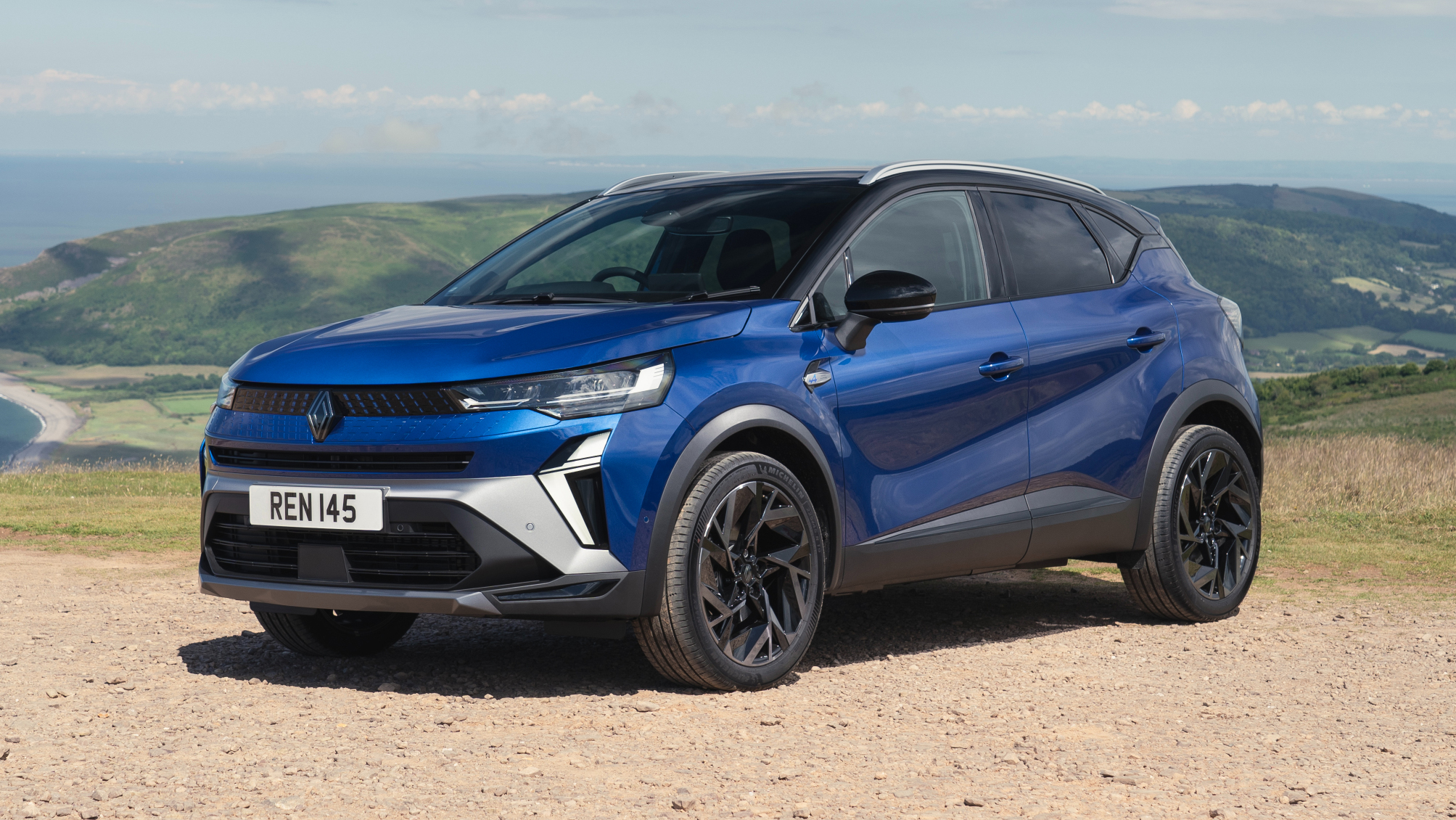
Good stuff
Chiselled and handsome, smart interior to match, plenty of room inside
Bad stuff
Naff engine line-up, hybrid has a mind of its own, rides worse than before
Overview
What is it?
It’s the second coming of the Renault Captur, a car we probably snored at before we drove it, reasoning that a taller SUV-ish Clio was a silly idea no one would much care for. Whoops. It promptly landed Renault a smash hit, becoming the top selling ‘B-segment’ supermini crossover in Europe and at one point the third most popular in the UK. Yep, we might pigeonhole newcomers in this class as ‘Juke rivals’ but Renault’s Captur is one of the big fish in this pond.
Not that there wasn’t plenty of room for improvement in the old Captur, which had a bobbly ride and tinny cabin. What bodes well for this Captur Mk2 is that it’s based – inside and underneath – on the current (but soon to be replaced) Clio. And that means a better platform, more space, more strength and safety, and a comprehensively up to date cabin.
How up to date are we talking?
It’s farm fresh. The Captur was facelifted in 2024, introducing a bigger central touchscreen with Google infotainment built in, plus a larger digital driver’s display, standard wireless phone charging and USB-C ports and a smattering of driver aids.
You’ll have noticed as well that the styling’s changed radically (for a mid-life update), bringing the Captur more into line with the Megane and Scenic on a path set out by chief designer Gilles Vidal. If you’ve ever wondered why so many modern Renaults look so chiselled and purposeful these days, he’s why. The Mk2 Captur was a looker before and still is, just in a different way.
On the mechanical front the power steering has been recalibrated, while the running gear has been revised and all-new shock absorbers added. Net result? The ride is… worse. Oops. We’ll elaborate on the Driving tab.
Oh dear. What about the engines?
Previously you could choose from a range of three- and four-cylinder turbos, plus a pair of hybrids; one plug-in, one not. Nowadays you’ve got two options: a 1.0-litre 3cyl turbo petrol manual generating all of 89bhp, or a 1.8-litre petrol hybrid auto with a healthier 158bhp.
The latter is new for the 2026MY Captur, and replaces the old 144bhp 1.6-litre petrol hybrid, which in theory is good news. It offers improved performance (it’s over a second faster from zero to 62mph than before) while it also gets a higher capacity 1.4kWh battery (up from 1.26kWh). Renault claims improved economy and reduced emissions – wouldn’t be much good if it was worse off, would it?
Except… like its predecessor, it’s still set to top up the battery whenever it needs juice, and as a result sits at ridiculously high revs when pottering through town, making an excruciatingly loud noise while doing so. Argh!
Oh dear. Throw me a bone, please.
Check out the seats which look suspiciously like they’re from a recent Volvo. No higher praise than that, really. In fact, the whole cabin is the headline here – it’s way nicer inside than the old one. Sure, that’s like saying a hotel room is smarter than a windswept tent, but still. The upholstery’s made from recycled materials now, but we mourn the loss of the funky orange cloth post-update. Shame, it injected some fun.
No, the Captur’s grown up and gotten its act together, and that’s most welcome. Roomy as well, but that’s courtesy of the whole car swelling in every dimension.
How much are we talking here?
The 3cyl opens the bidding at £22,195, while the hybrid is three grand more. That compares favourably to the Ford Puma, but there’s a reason for that: the Puma’s the best option in this segment by a country mile. You might also want to look at the Peugeot 2008 and Nissan Juke, but those two also pale in comparison.
If you’re wondering why there’s not much ado about anything in the small crossover game right now, it’s because small cars are dying out and all the investment is going into developing EVs. Which Renault happens to be rather good at. How about a Renault 4 or Megane E-Tech Electric instead?
Our choice from the range

What's the verdict?
That the Captur is a night and day improvement over its predecessor in looks, refinement and cabin quality is not up for debate – Renault’s pulled off exactly what it needed to with the Captur Mk2, and the facelift has kicked on in a couple of key areas. It’s regressed in others though: the ride is harsher than before and even the latest hybrid engine remains sub-par. That’s a big weakness.
It’s hardly interesting to drive, but then again barely any crossovers are, and that’s not their purpose, either. The design and cabin quality are the standouts. The spec list is strong and it’s roomy enough to justify its existence next to the Clio. But if you want a small runabout with statement looks for this kind of money, Renault offers the excellent similarly sized Renault 4 or the brilliant little Renault 5.
The Rivals
Trending this week
- Car Review
Chery Tiggo 9










